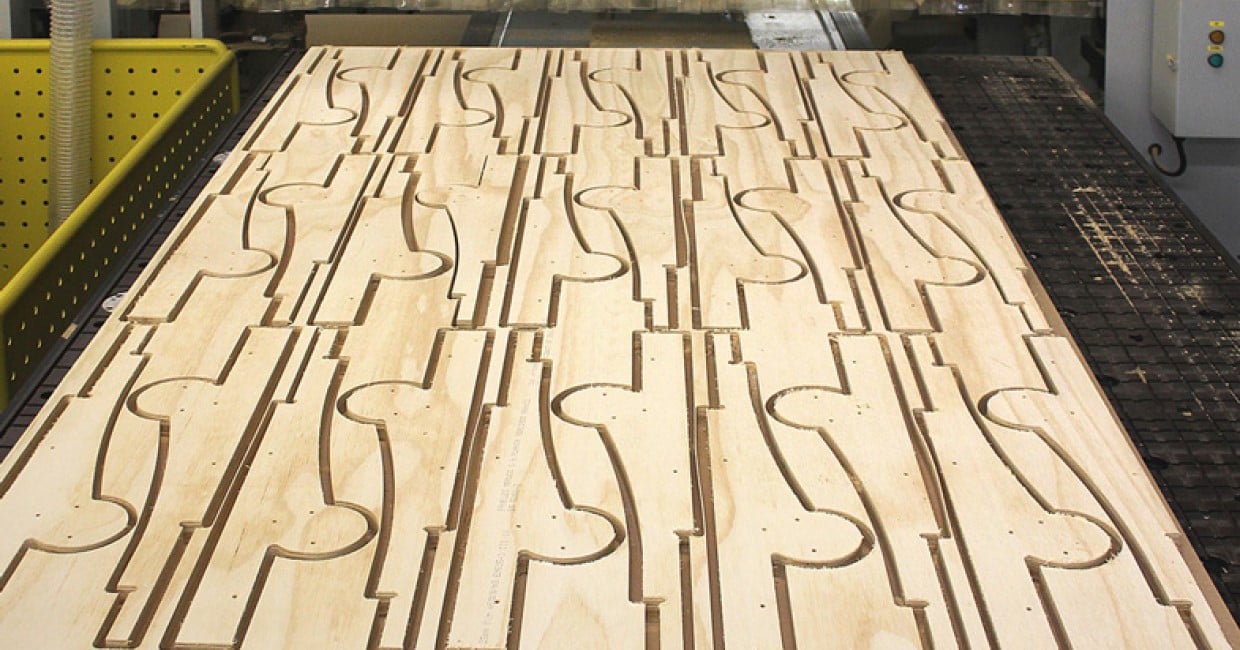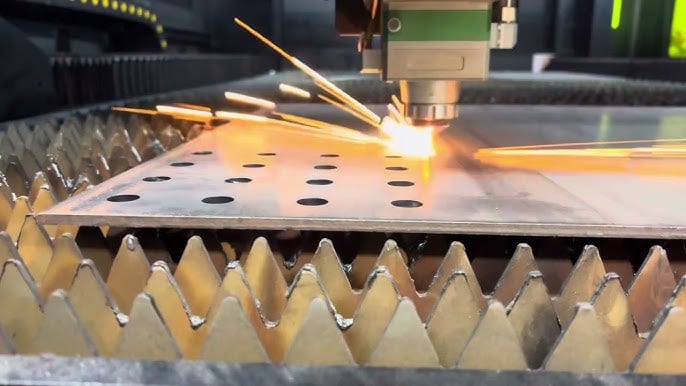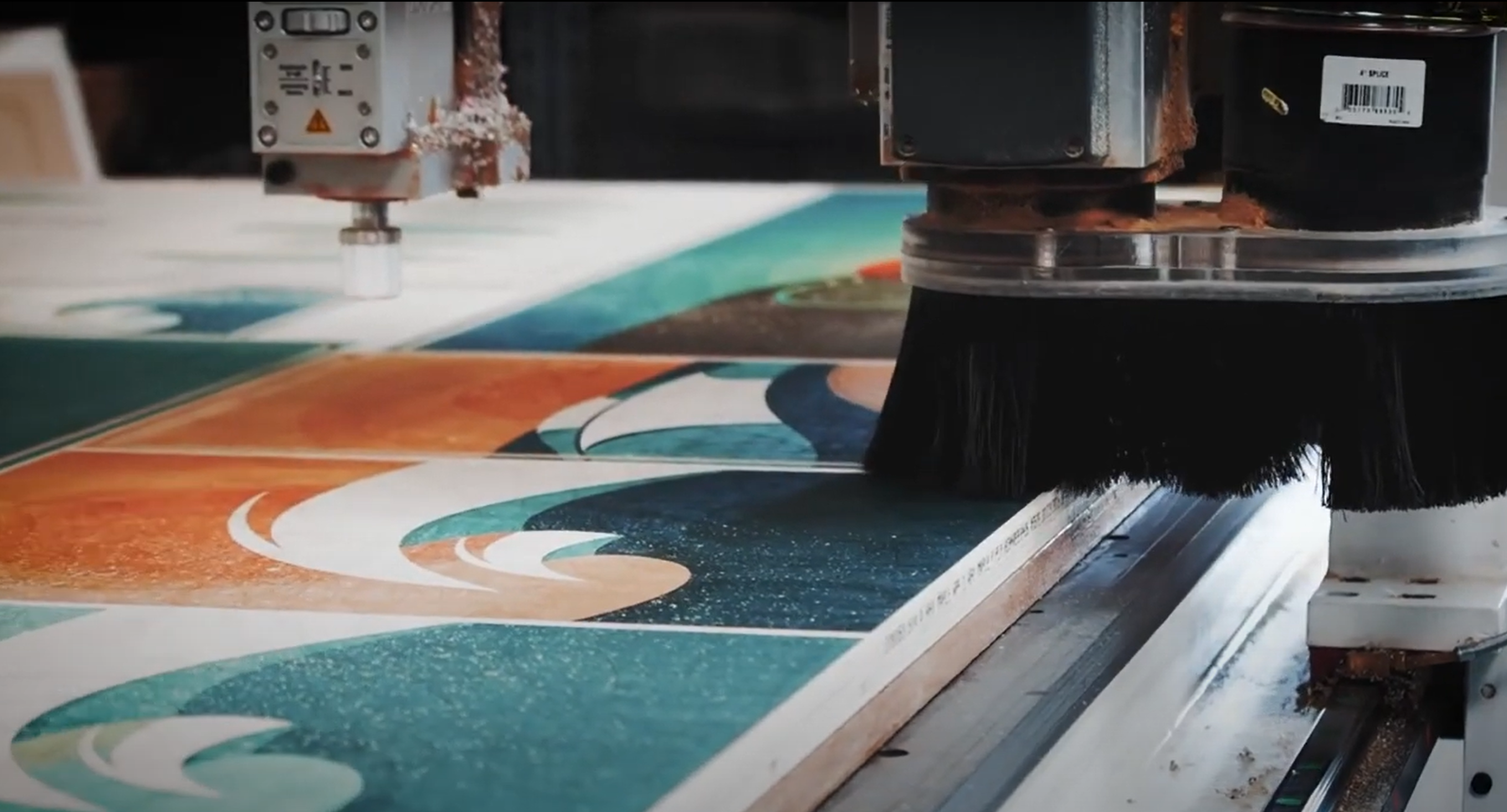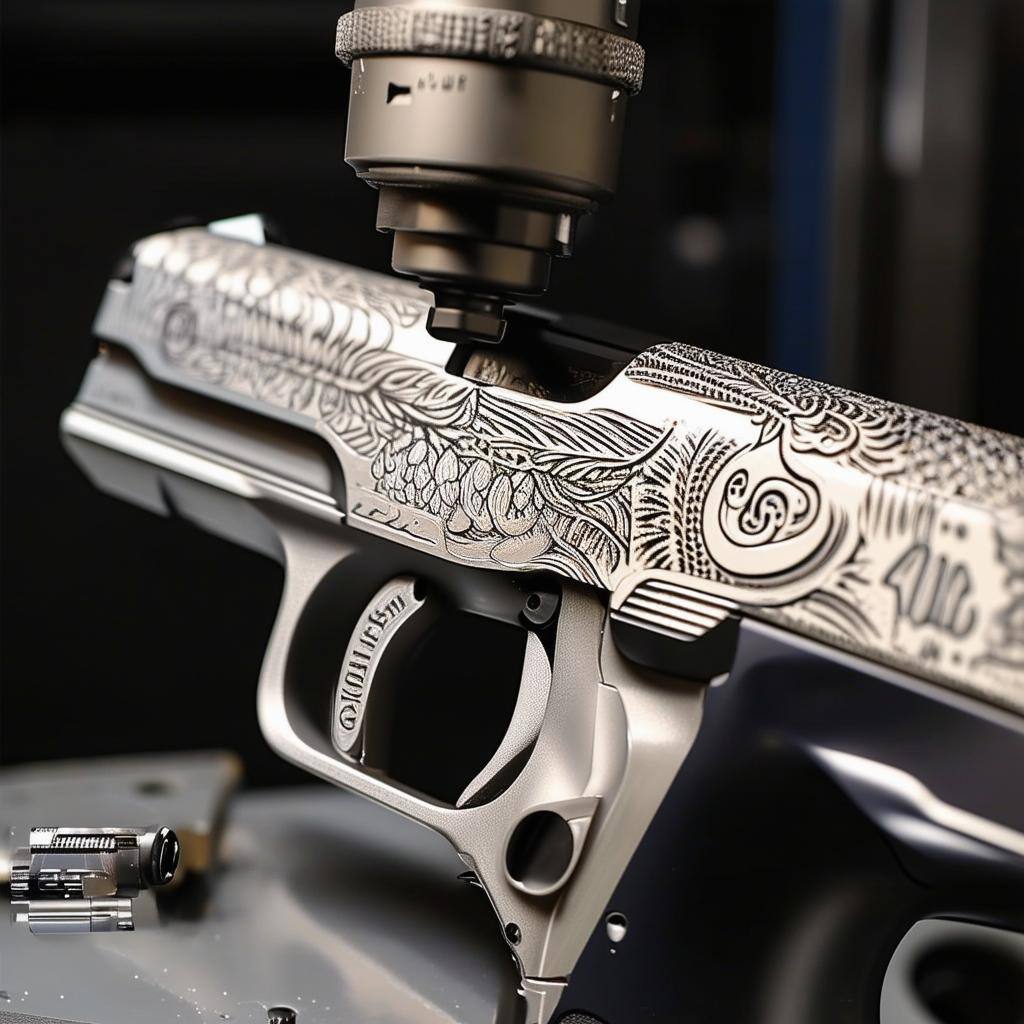Nested-based manufacturing refers to a system used to efficiently produce groups of rectangular and non-symmetrical parts from flat material, such as composite and solid wood panels or plastic sheets. The components are “nested” together on the material (see the photo below), which means they are positioned in a pattern that achieves the best possible material utilization.
Photo Credit: Furniture Production
Both large and small manufacturers can derive benefits from nesting since businesses of all sizes are concerned about managing material and labor on their financials. And with the help of nesting software and a well-built CNC router, it’s possible to produce the quantities of required parts in a space-efficient configuration.
How does nested-based manufacturing (NBM) help companies to increase productivity?
First of all, you need to consider the alternative of a woodworker using the manual point-to-point method of making a part. Say you would need 20 parts with three separate operations for each one—layout, drilling, and sawing. That amounts to 60 “tool changes” to get 20 pieces if you do them one part at a time.
With a CNC router and a nesting program, there would be three tool changes to profile, drill, and cut out all 20 components. Also, keep in mind that a router uses much higher feed rates to produce these parts, so you will have them off the CNC much more quickly
And one more consideration: a CNC router operator can be getting the next sheet ready for the machine, or doing any other tasks, while the router is machining because no direct intervention is required from the operator. This advantage also results in increased productivity, and because the operator is only responsible for loading and unloading the material, it reduces labor costs significantly, too.
Nesting can have a direct effect on your return on investment (ROI)
The more cuts that are being made out of one piece of material, the more material costs will decrease, along with the amount of wasted material.
Manufacturers could see up to a 30 percent reduction in materials usage, which by itself can translate into a positive ROI because of the investment in nested-based manufacturing.
And not only does using less wood and other materials help the bottom line, but it also means your organization is operating in an environmentally conscious manner.
Nesting gives you options
There are two primary options for nesting. You can nest the same types of parts to make as many of them as possible. Or you can nest different sizes and shapes together on the same sheet of material (see below).

For example, components for a specific cabinet will be machined together and will move through the shop and on to assembly as a distinct group.
Doing this simplifies the process and eliminates the confusion of searching through piles of panels to find the right one for a particular cabinet. In most cases, you will no longer need bar code labels.
Who can benefit from nested-based manufacturing?
While practically any size and type of business that requires machined parts will likely benefit from NBM, in the woodworking industry, the companies that produce kitchen cabinets and doors, ready-to-assemble furniture, and store displays will see tremendous advantages from it.
For instance, a CNC router coupled with nested-based capabilities is ideal for a business that manufactures an increasing flow of cabinets each month and is considering bringing in more workers. Instead of going through an expensive hiring process, the automation from nesting will allow them to increase the workload without adding production time.
Companies that employ NBM, instead of additional people, tend to become more responsive to industry trends and customer demands. They also save money by decreasing or eliminating some secondary operations.
To learn how nesting can work in cabinet making using the Laguna SmartShop 2 and Mozaik software, watch this YouTube video.
Software integration is vital to NBM’s success
As you will have observed if you watched the recommended video, the software (below) is strategic to achieving successful nested-based manufacturing. Integration begins with order entry of the part design directly to the CNC router.
The overriding goal is to reduce or eliminate all manual handling and worker intervention. Whenever information can be sent directly to the router, the efficiency of the equipment improves, and the return on investment gets a significant boost. (Below: Irregular-shaped nesting image from Mozaik Software)

Does nesting work better for high-volume or lower-volume production?
The short answer is that it works well for either application. While some believe it’s perfect for high-volume orders, especially if the parts have complex shapes, others insist that shops who do low-volume and custom work benefit from it since there are virtually no setups involved in the process.
Being able to switch from one part to another almost instantly will have a substantial impact on the cost-per-part, whether in larger quantities or one or two of each.
Some potential users have questions and concerns about nesting
The two main concerns center around the speed of machining and a reduced yield because of the wider kerf of a router tool compared to a saw kerf. Neither of these should be an issue:
With the rigidity of modern CNC routers, it’s possible to run at higher feed rates than with point-to-point systems even while removing substantial amounts of material. As for the concern over yield reduction, the wider kerf of the router is more than counterbalanced by the way that parts can be nested like a jigsaw.
The router can cut in any direction, and components can be easily arranged on the material sheet by the nesting software to get the highest yield.
The essential advantages of NBM: accuracy and consistency
Each set of parts that comes off the CNC router will be within tight tolerances every time. This consistency makes the nesting process predictable and reduces the number of replacement parts and rework. With the higher tool speeds and feeds, the finishes on all edges are much better, and there are fewer setups and machine downtime.
The CNC router and NBM ultimately improve many aspects of an enterprise. They reduce manufacturing cycles through increased efficiency, which results in reduced inventory costs, increased productivity, and they allow a business to react more quickly to changes in work and workflow.





